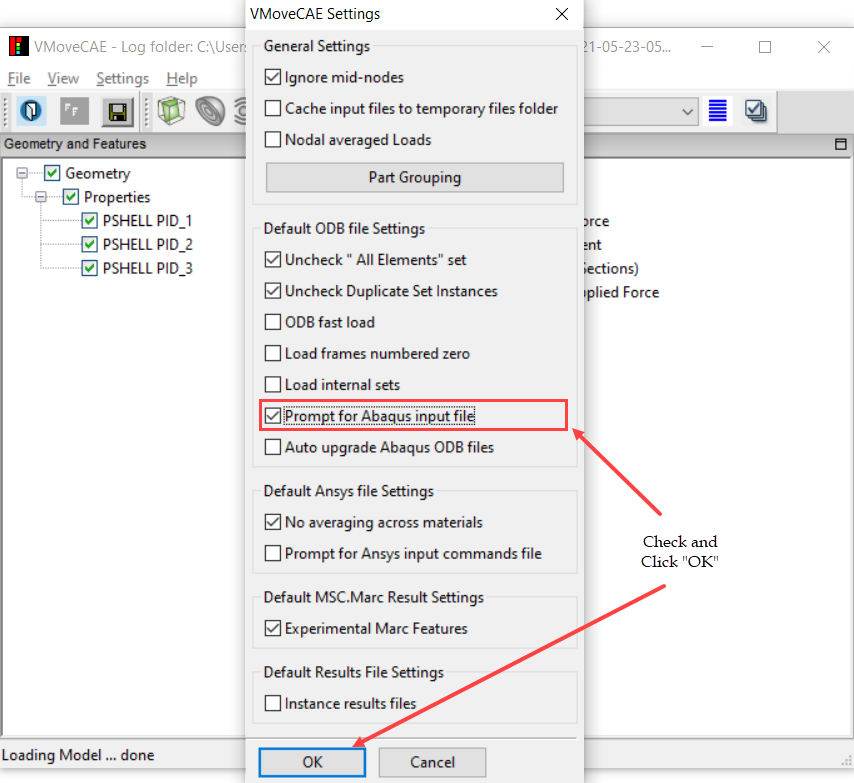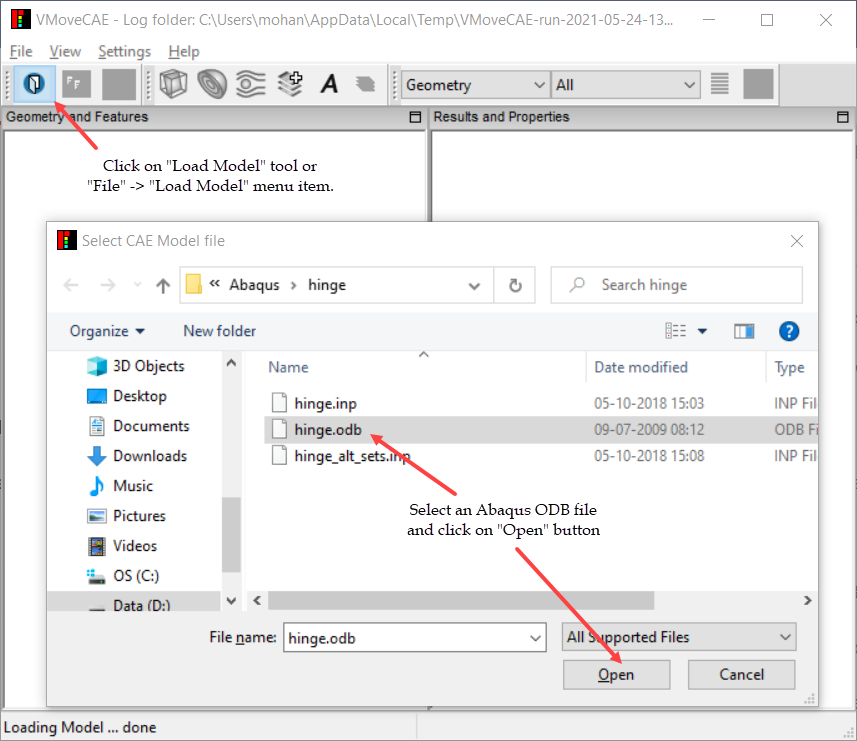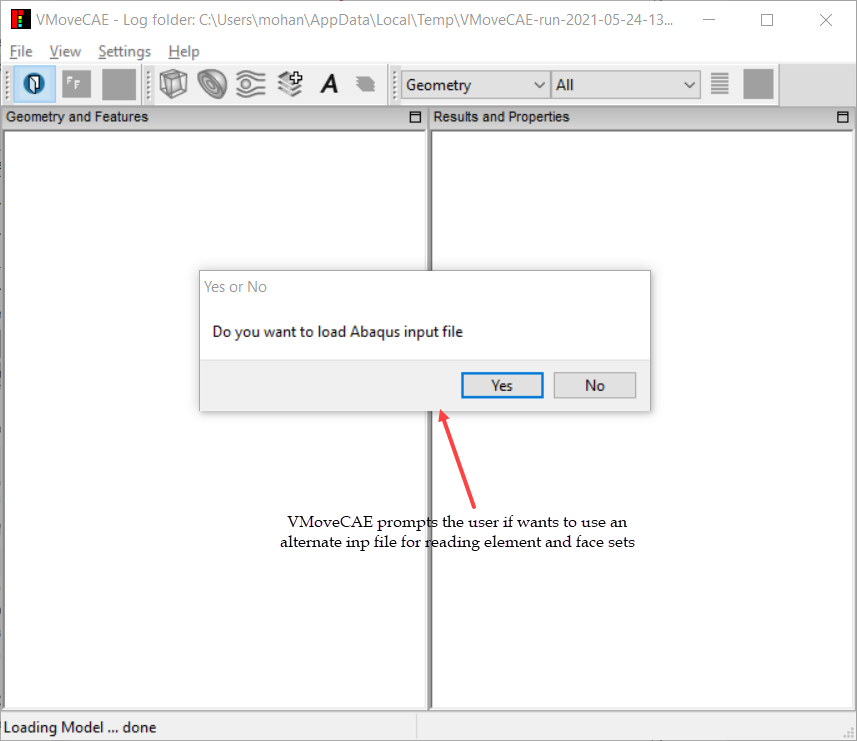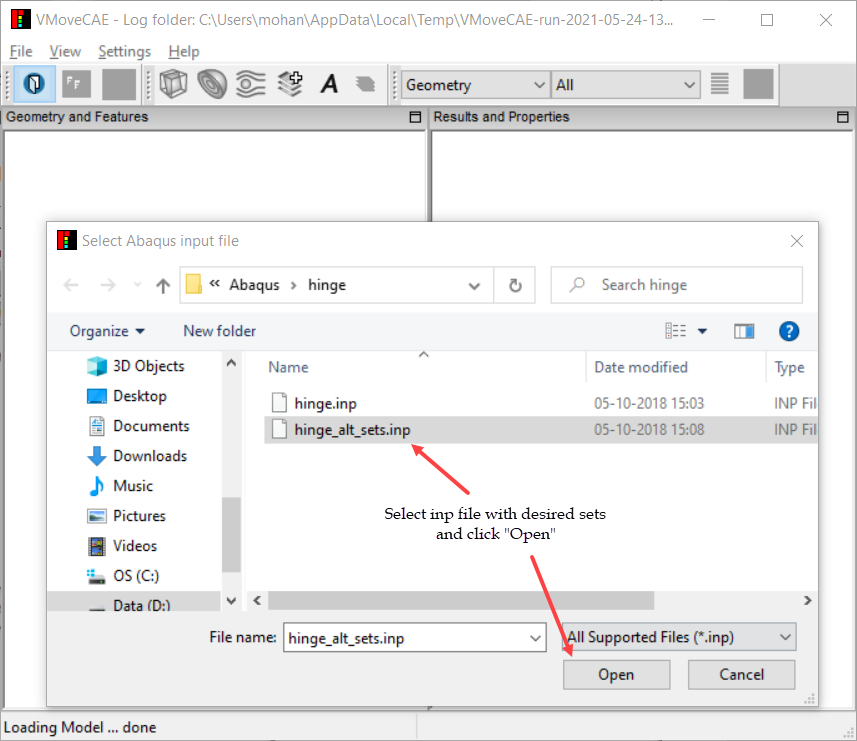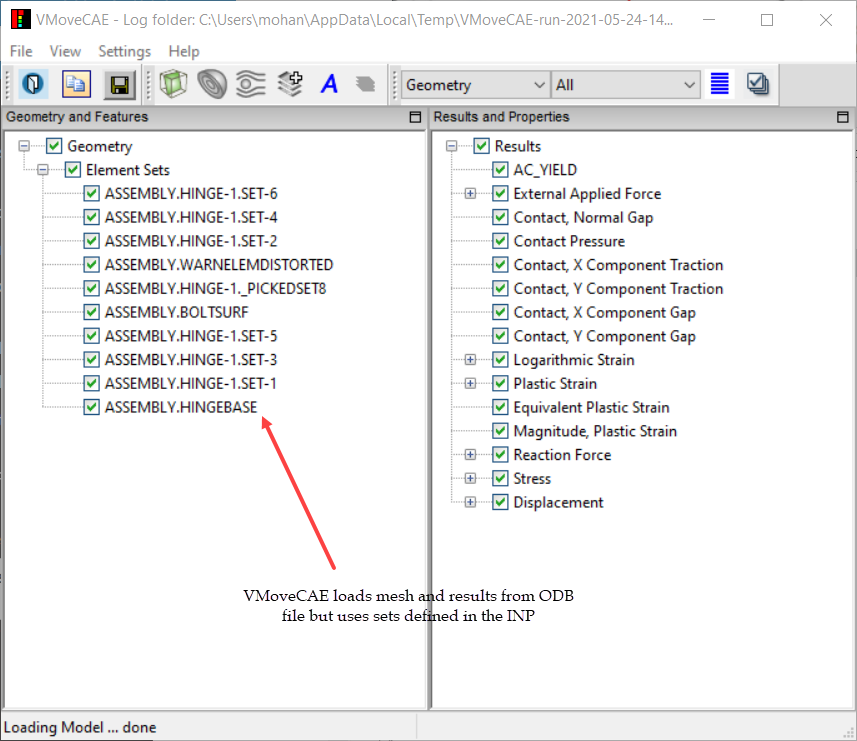Element and Face Sets from Abaqus Input Files
VMoveCAE allows users to read element and face sets from compatible Abaqus INP files and use them as parts while translating the ODB files. This functionality is available through GUI as well as in batch mode. The mesh and element ids in both the INP and ODB files are expected to be the same.
VMoveCAE GUI
Start VMoveCAE.
Go to Settings->Preferences -> Check Prompt for Abaqus input file in the Preferences dialog box.
Click on the “OK” button to update the setting.
Click on the Load Model icon to load an Abaqus solution file (.odb).
VMoveCAE prompts for the Abaqus input file (.inp). Click Yes to select an Abaqus input file.
Select the required Abaqus input file (.inp).
This will load the element and face sets from the Abaqus inp file and uses them with the geometry and results defined in the Abaqus results file as shown in the image.
Note: Clicking No during the prompting leads to loading of only the geometry and results from the Abaqus results file.
Batch mode
To read and translate element and face sets from Abaqus INP file in batch mode,
users need to specify the location of INP file using --abaqus-input-file
option. The example below reads geometry and results from hinge.odb,
element and face sets from hinge_alt_sets.inp, translates and saves the output
to hinge.cax.
VMoveCAEBatch.exe --abaqus-input-file="hinge_alt_sets.inp" hinge.odb hinge.cax
